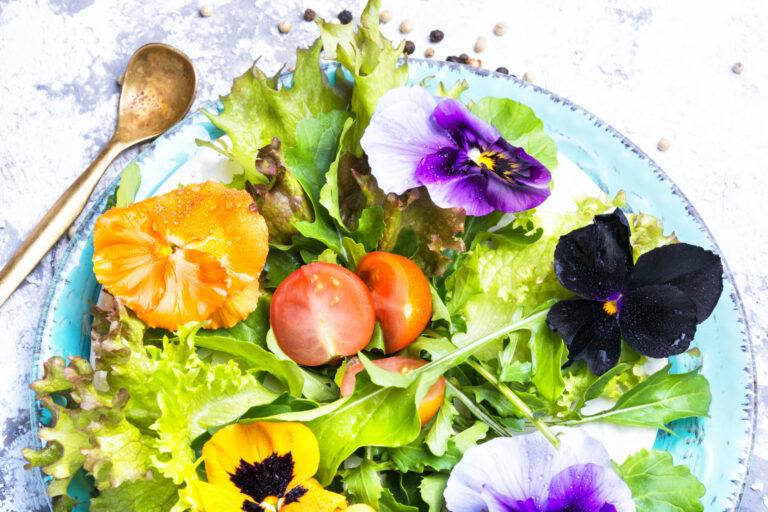In 2018, researchers at DTU Food (National Food Institute, Technical University of Denmark) published a study on whether edible flowers offered in restaurants and available at local markets are safe for consumers. The Danish authority inspected 150 restaurants and food producers.
Flowers from 23 different plants have been identified that are consumed:
- nine contained compounds with toxic or potentially toxic effects if eaten:
- Yarrow (Achillea millefolium),
- Borage (Borago officinalis),
- Viper's bugloss (Echium vulgare),
- Common broom (Cytisus scoparius),
- Yellow archangel (Lamium galeobdolon),
- Lilac (Syringa vulgaris),
- Woodruff (Galium odoratum),
- Garden nasturtium (Tropaeolum majus),
- Heart's ease (Viola tricolor);
- two contained unidentified toxic compound(s):
- Yarrow (Achillea millefolium),
- Pot marigold (Calendula officinalis);
- four were flowers from plants with potentially toxic compounds present in other plant parts or related species:
- Common bugloss (Anchusa officinalis),
- Garlic mustard (Alliaria petiolata),
- White dead nettle (Lamium album),
- Beach pea (Lathyrus japonicus).
Known toxic compounds (pyrrolizidine alkaloids (PAs), coumarins, eugenol, cyanogen, flavonoids, glycosides, phenols, organic carbons, salicylates, biogenic amines, mono- and polyterpenes, glucosinolates, thujone, erucic acid) have been identified for example in the flowers of yarrow, borage, yellow archangel, woodruff, nasturtium or heart's ease. Among the compounds identified are carcinogenic, reproductive system disrupting, genotoxic, and hepatotoxic (e.g. methyl eugenol, PAs, furocoumarins; coumarin); cardio- or neurotoxins (e.g. erucic acid, thujone).
Guiné et al (2019) investigated the consumption of edible flowers in Portugal. Among nearly 250 respondents, more than half of the respondents had consumed flowers (chamomile, pansy, pumpkin flower, marigold, sunflower, orchid). A higher antioxidant and nutrient intake was cited as a reason for flower consumption.
Colombo et al (2010) described several cases of illnesses associated with the consumption of plants and flowers. Ingestion of Aconitum (mixed with wild asparagus) or of the leaves of lily of the valley instead of bears' garlic have also caused illnesses and deaths. The leaves of foxgloves mixed with borage can also cause problems. Borage flowers are also commonly added to salads.
Many of the flowers can be considered novel foods as it has not been possible to establish that they were used as a food to any significant extent in Europe before the entry into force of Regulation EC 258/97 on novel foods and novel food ingredients. In summary, this review highlights that there is a striking lack of chemical and toxicological data on many wild and cultivated flowers proposed for food use. Further data would be needed to take appropriate action, both on domestic flower consumption and on the constituents found in plants and flowers.

